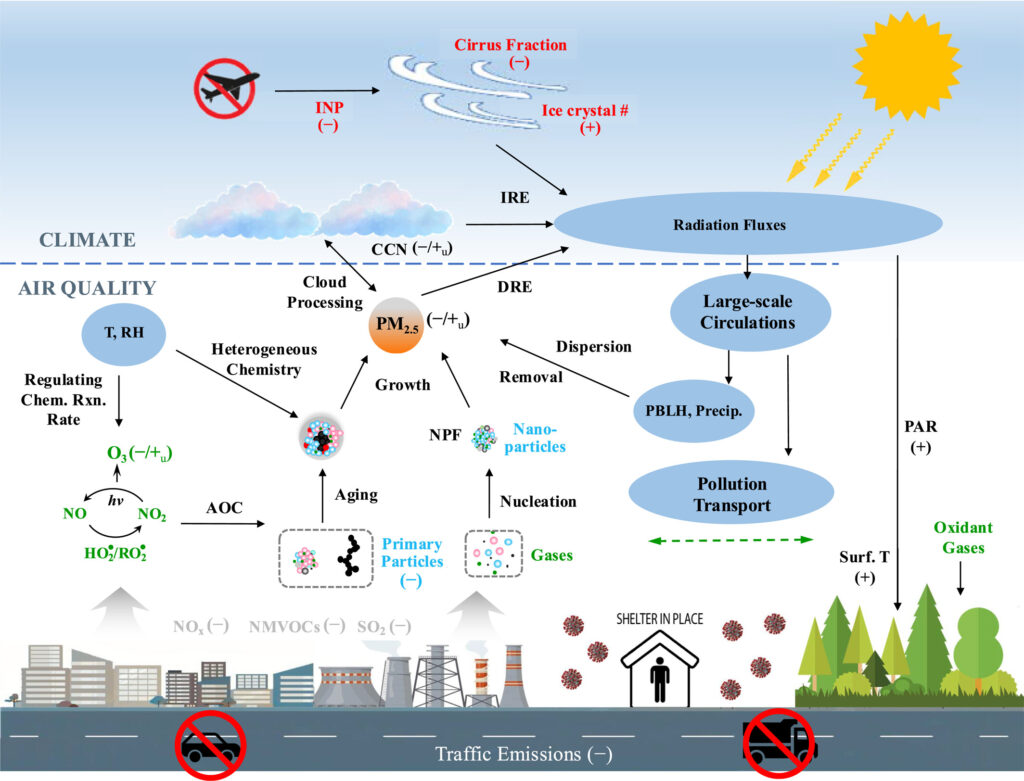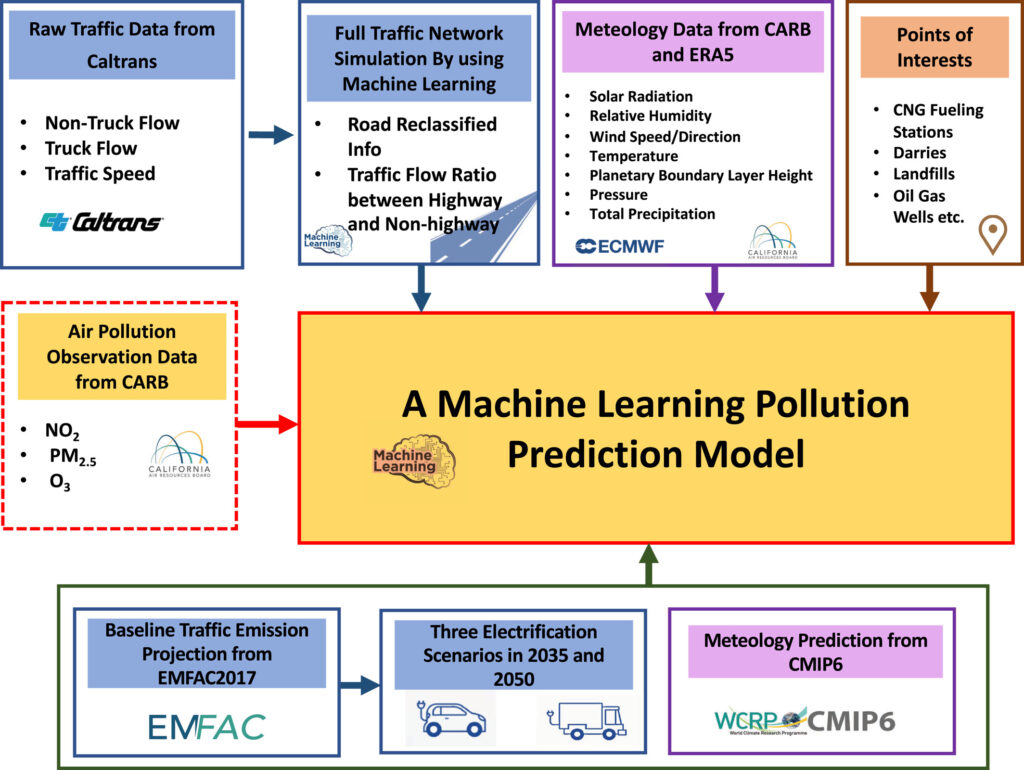Editors’ Vox is a blog from AGU’s Publications Department.
In early 2020, the COVID-19 pandemic lockdowns were unprecedented in modern history. Emissions of air pollutants (e.g., black carbon, carbon monoxide) and their precursor gases (such as nitrogen oxides (NOx), sulfur dioxide (SO2), and volatile organic compounds (VOCs)) were significantly reduced during that period. This provided a unique opportunity to study air pollutants as the spatial (global) and temporal (a few months varying by regions) scales of this shift in anthropogenic emissions had never been observed before.
A new article in Reviews of Geophysics synthesizes the latest research on COVID-19 induced emission reductions and the associated climate impacts. Here, we asked the lead author to give an overview of the major findings thus far, how scientists studied this event, and what questions remain.
What are the primary air pollutants and why are they classified as short-lived?
Current leading air pollutants are particulate matter (PM2.5) and ozone, considering their global health impacts. They are classified as short-lived because their residence time in the atmosphere is only a few hours to a few days before they are removed physically or chemically. In contrast, some greenhouse gases, such as CO2 or N2O, can live in the Earth’s atmosphere for more than a hundred years.
Overall, how did human behaviors during the pandemic affect air pollutants at a global scale, and were there any distinct regional or local variations?
Lockdowns, restricted travel, and reduced commercial activity led to noticeable shifts in air pollutant levels around the globe. This varied by country due to different restrictions on activities that were imposed by governments over time. However, one of the most widely reported effects was the sharp decline in NO2. Data suggest that this decline was 20 to 50% in major urban areas. This led to a pronounced increase in ozone pollution, which, in turn facilitated the formation of secondary PM2.5. While this summarizes the overall trend, the reality was far more complex with significant spatial variations. The figure below captures some of the interactions at play.

Aside from air pollution changing characteristics of the atmosphere during the pandemic, what were the impacts on vegetation growth?
Several pathways for the pandemic impacts on vegetation growth are identified in the COVID-19 literature. First, particulate matter was found to influence vegetation growth by directly reducing the total solar radiation reaching the ground, which is essential for plant photosynthesis. It can also indirectly increase diffuse radiation, known as “diffuse fertilization”, by enhancing light penetration to lower canopy or shaded leaves and thereby improving light use efficiency and bolstering ecosystem productivity.
Other pathways included adverse impacts of oxidant gases, notably NO2 and ground-level ozone, on vegetation health, as well as temperature variation (especially nighttime cooling) induced by aerosol particles during the pandemic.
Were any new methods for observing, measuring, and modeling air pollutants used during the pandemic?
As for new methods in data analyses and modeling, machine-learning-based approaches exhibit significant advantages, such as a wide range of predictive variable choices (e.g. the data from societal and human behaviors), the intrinsic capability of capturing non-linear relationships, and a relatively low computational burden. Several machine learning-based prediction models outperform traditional chemical transport models, and large traffic emission reductions during the pandemic boost their reliability of predicting future emission scenarios, especially those focusing on traffic regulations.
On the observational side, the state-of-the-art remote sensing products of short-lived species, such as the TROPOspheric Monitoring Instrument (TROPOMI), were widely used and provided near-real-time measurements with global coverage.

Is it possible to replicate what happened with anthropogenic emissions during the pandemic over a longer term to address climate change?
As many countries implement air pollution mitigation strategies, anthropogenic emissions are projected to gradually decline. However, these reductions take place on the interannual or even decadal timescale, meaning their magnitudes are not directly comparable to the abrupt changes observed during the pandemic.
What are some of the remaining questions where additional modeling, data, or research efforts are needed?
Aerosol speciation data with high spatiotemporal resolution were relatively limited during the pandemic, which causes persistent challenges in characterizing aerosol chemical species and their evolution, especially for organic aerosols. Also, most surface measurements during the pandemic were conducted over populous urban areas that are already known to be in the NOx-saturated regime.
Large-scale, concurrent, and continuous observations of precursor gases with a focus on VOCs, speciated aerosol composition, and meteorological conditions over diverse locations remain highly desirable to obtain a comprehensive view of air pollution responses. Sector-specific emission inventories are much needed by the modeling community for fast attribution analyses. Future development of those products will rely on the generation of new satellites (both polar-orbiting and geostationary) and improved inverse modeling capabilities.
—Yuan Wang ([email protected]; ![]() 0000-0001-6657-8401), Stanford University, United States
0000-0001-6657-8401), Stanford University, United States
Editor’s Note: It is the policy of AGU Publications to invite the authors of articles published in Reviews of Geophysics to write a summary for Eos Editors’ Vox.

